Fitness App for People with Different Abilities
An inclusive fitness app for individuals with different disabilities and creating a space for content creators to create and share accessible exercise classes.
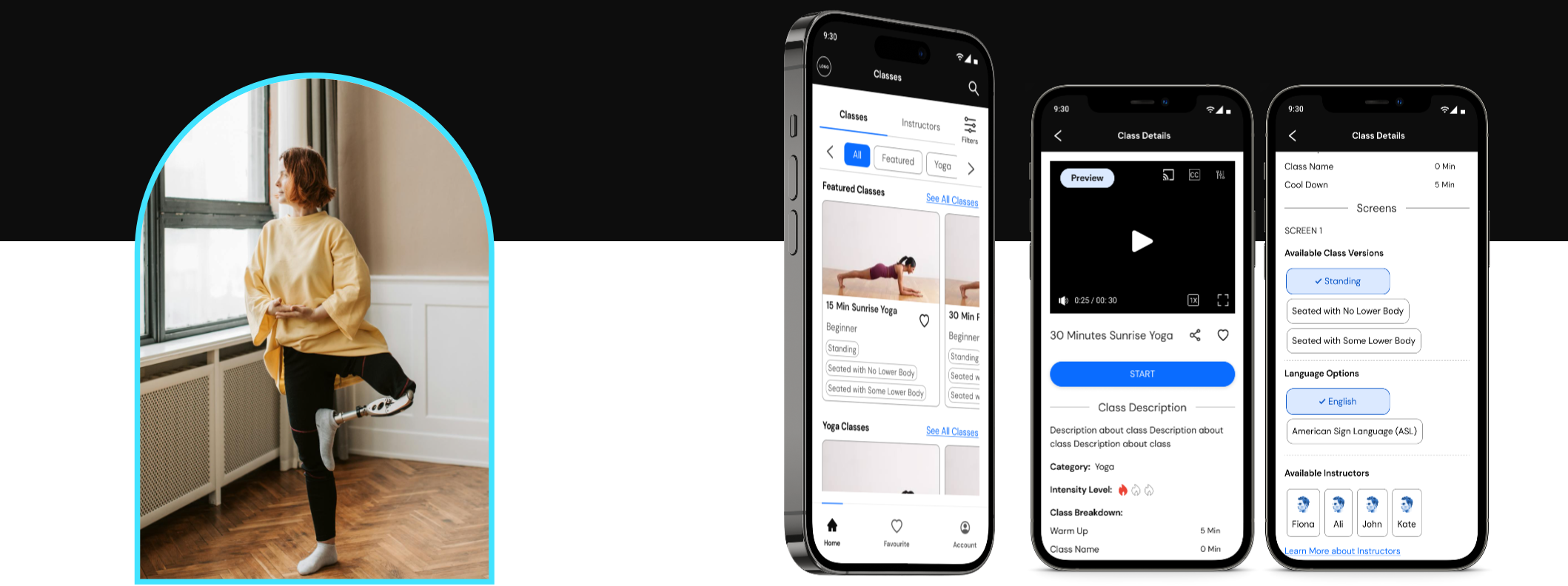
Overview
Sekond Skin Society (SSS) is an early-stage startup that creates an inclusive fitness app for individuals with different disabilities and creating a space for content creators to create and share accessible exercise classes. I joined SSS in Fall 2023 after I got introduced to their CEO through the CEO of a former startup I worked with, Orchid Analytics!
As the lead designer, I worked with the CTO, the content generation team, and the development team to design and deliver the Minimum Viable Product (MVP) for the app, which launched in Summer 2025. 🚀
At SSS, I am in charge of creating the high-fidelity designs, and user research and testing. I also created the component library forming the SSS design system, which we use as a guideline for prototyping and app development.
🎯 The Challenge
Transform an early-stage startup idea into a comprehensive, implementable mobile app design that enables people with disabilities to workout together accessibly.
🚀 The Result
An accessible fitness app that allows people with different disabilities to exercise together, with features designed for developer implementation and WCAG compliance
My Role:
Lead Product Designer
Teammates:
Product Owner
4 Developers
Content team
CTO
Duration:
Ongoing
Since Fall 2023
1. Initial Research
When I joined the team, I asked to review the research that had been done before me. The team's research analyst had previously conducted an initial survey and market research, including competitive analysis.
Here are a few quotes that stood out to me from their initial survey:
"I need to see options for modifications of some movements that I can't do due to joint pain."
"Need to use an app with my husband who uses a wheelchair"
"Being able to control the volume of the background music without dimming/increasing the instructor's voice."
1.1. Target Groups
Based on the team's research, we decided that at the very least, the app should meet the needs of these three target groups:
- 🦻 Deaf/Hard of Hearing
- 👁️ Low Vision/Blind
- ♿ Low Mobility
1.2. Impact Features
We set out to design a fitness app with these impactful features:
- 🏃 Accommodating the various needs of the target groups by providing adaptive exercise class—with all classes provided in both English and American Sign Language (ASL).
- 👥 Including a "split screen" feature—for when two people with different abilities want to exercise together.
- 🔊 Customizable audio settings for the music and instructor audio tracks.
Key User Insights
🎯 Instructor Preference
"I prefer instructors who share my experiences or needs"
Impact: Integrated instructor profiles into dashboard
⚡ Class Planning
"I need breakdown of warm-up, workout, and cool-down times"
Impact: Added detailed class structure breakdown
🔊 Audio Control
"Control music volume without affecting instructor's voice"
Impact: Separate audio track controls
2. Conceptualization
Fast Prototyping & user interviews
In the beginning of the process, I started creating the information architecture and low-fidelity concepts for the primary use cases. I also conducted usability tests with the lo-fi mockups. Once we had confidence in the designs, I began digitalizing them.
Key Accessibility Features
Customizable Audio Controls
Separate volume controls for instructor voice and background music, ensuring users can adjust audio to their specific hearing needs
Split Screen Mode
Enables two people with different abilities to exercise together, each viewing their adapted version of the same workout
3. Design
3.1. Accessibility
Throughout the iterations, I ensured that the MVP designs met stringent accessibility guidelines, including certain color contrast criteria, font sizes, and actionable components such as buttons, tabs, and fields, through continuous feedback from accessibility experts.
3.2. Iterations of Dashboard
The dashboard's purpose was to organize a list of available classes into categories. I tested it with several users to ensure that the browsing and filtering classes experience was easy to understand and follow.
User testing revealed that people prefer to select exercise classes led by instructors who share their experiences or needs (e.g., wheelchair accessibility). To cater to this, a list of instructors has been integrated into the dashboard, allowing users to explore classes and instructors in one place.
Before
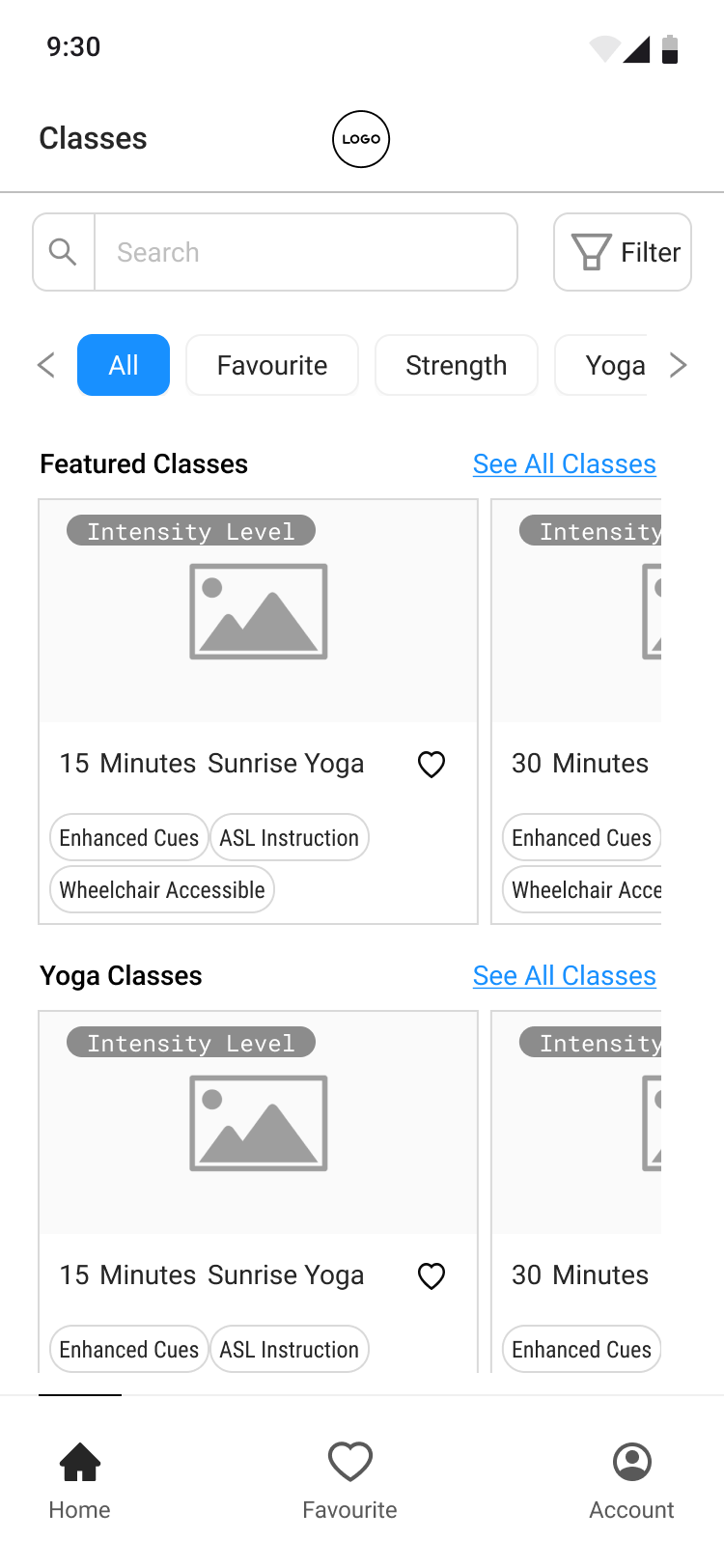
After - P1
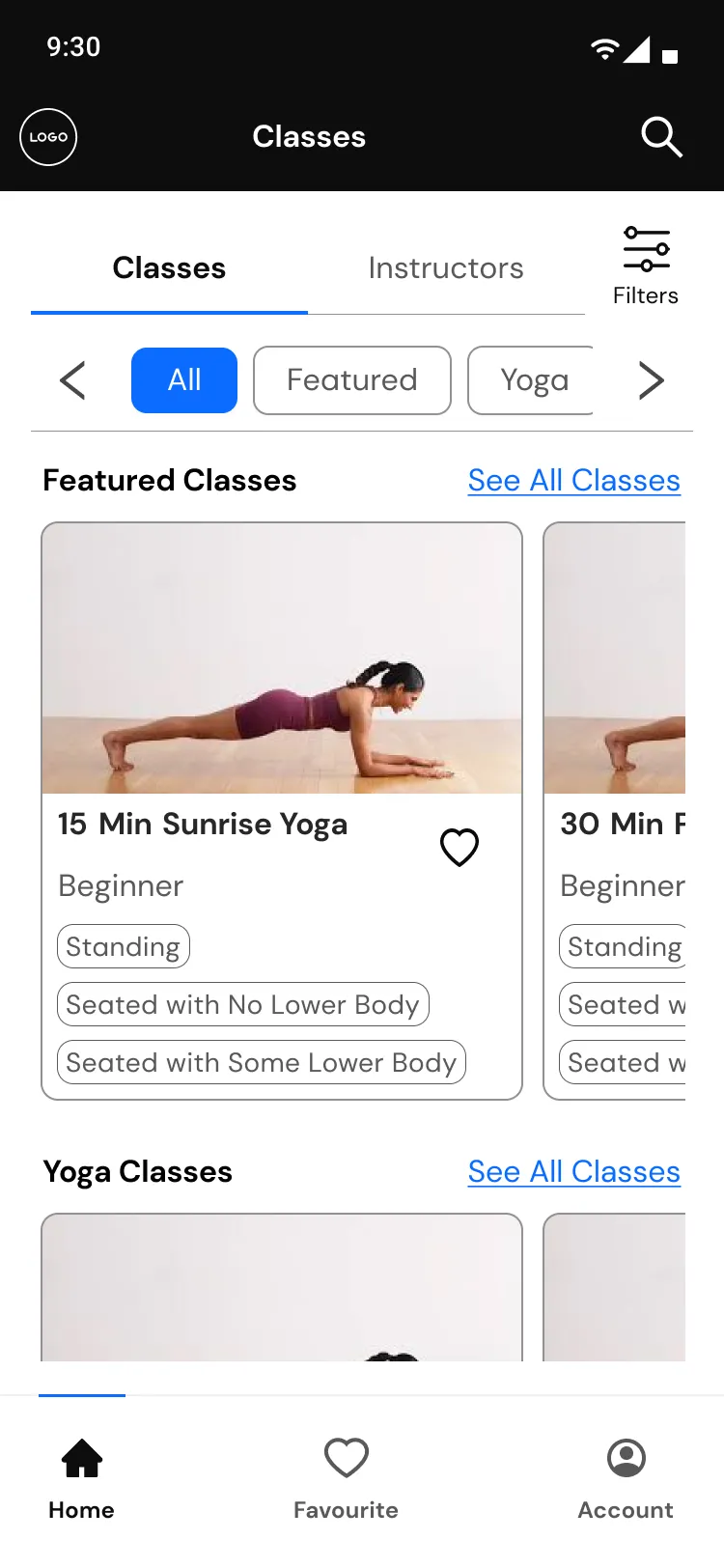
After - P2
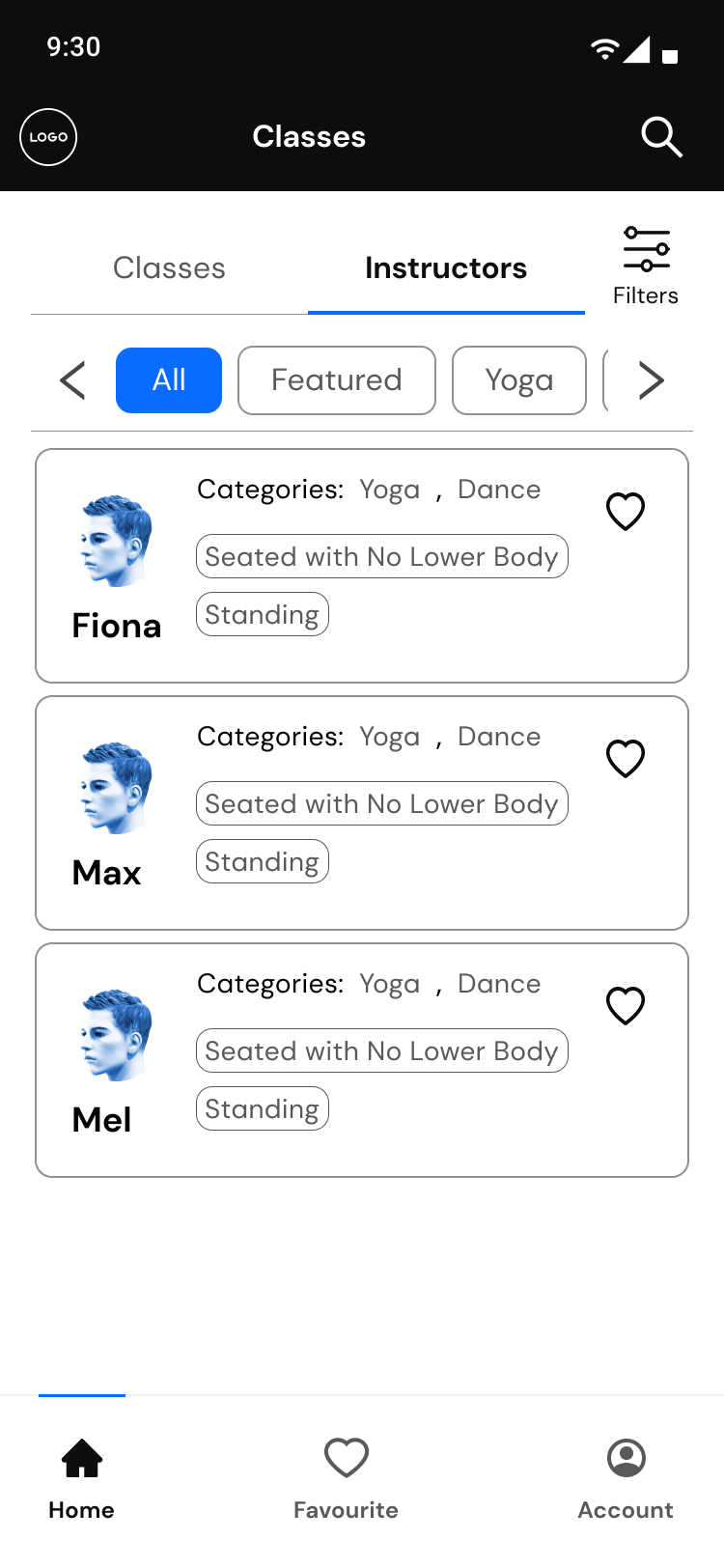
3.3. Iterations of Class Detail
A large portion of the time spent in this project was focused on designing and iterating the class details. I have included here a number of the iterations along the way.
Before

After

3.3.a. Change: Class Description
Users indicated that they needed more information for class descriptions. For instance, they liked to know the intensity of the classes and a breakdown of the class content. The breakdown would help them plan their warm-up and cool-down and equipment preprations accordingly.
"I would like to see clear details in the class description about how much time I need to spend on warm-up, the main workout, and cool-down."
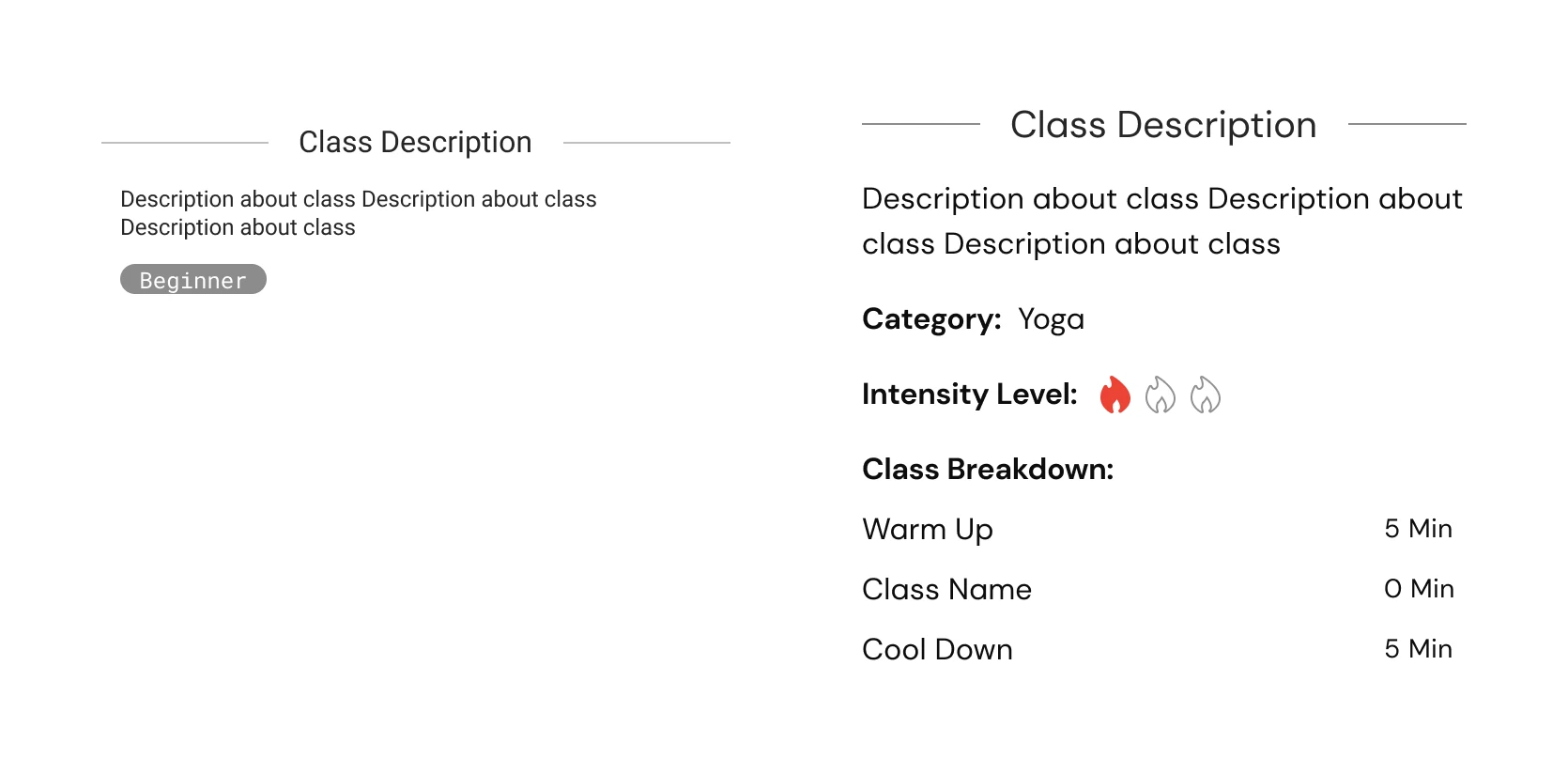
3.3.b. Change: Terminology
Based on feedback from the content team, the terminology for intensity levels—previously labelled as beginner, intermediate, and difficult—has been replaced with icons and the designations level 1, level 2, and level 3 to make the vocabulary less imposing.
The class version terminology was updated and standardized. A separate section for languages was also introduced. Previously, American Sign Language (ASL) classes were grouped under class versions as well which had given rise to potentially conflicting options.
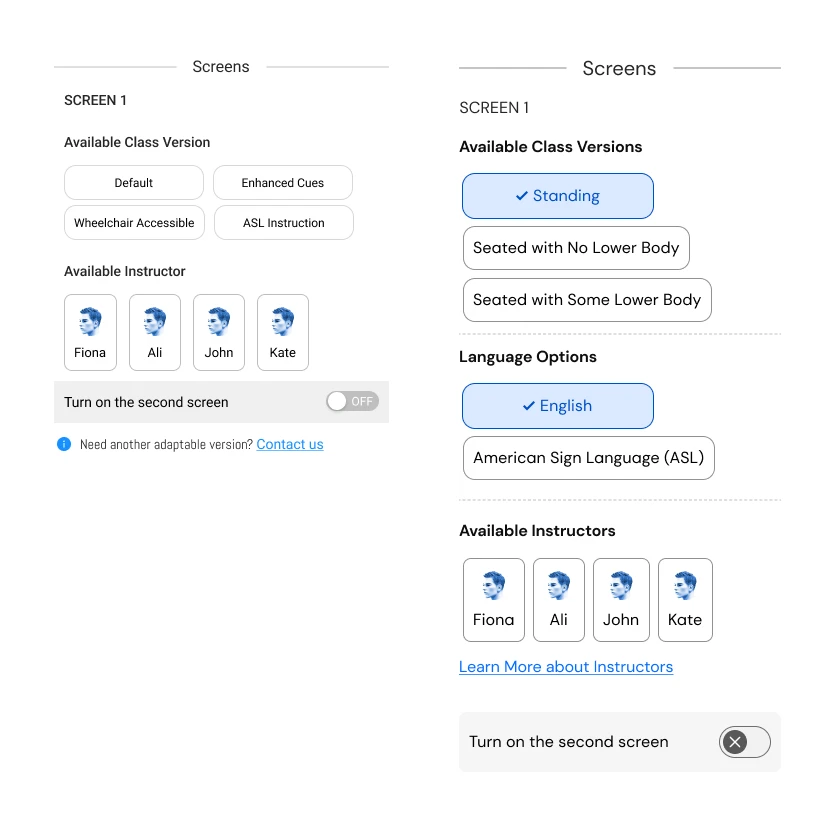
3.4. Iterations of Split Screens
A key feature of the app is its ability to display various adaptations of the same class. For instance, it enables a person with low vision to simultaneously participate in the same exercise as someone with limited lower body mobility.
Before
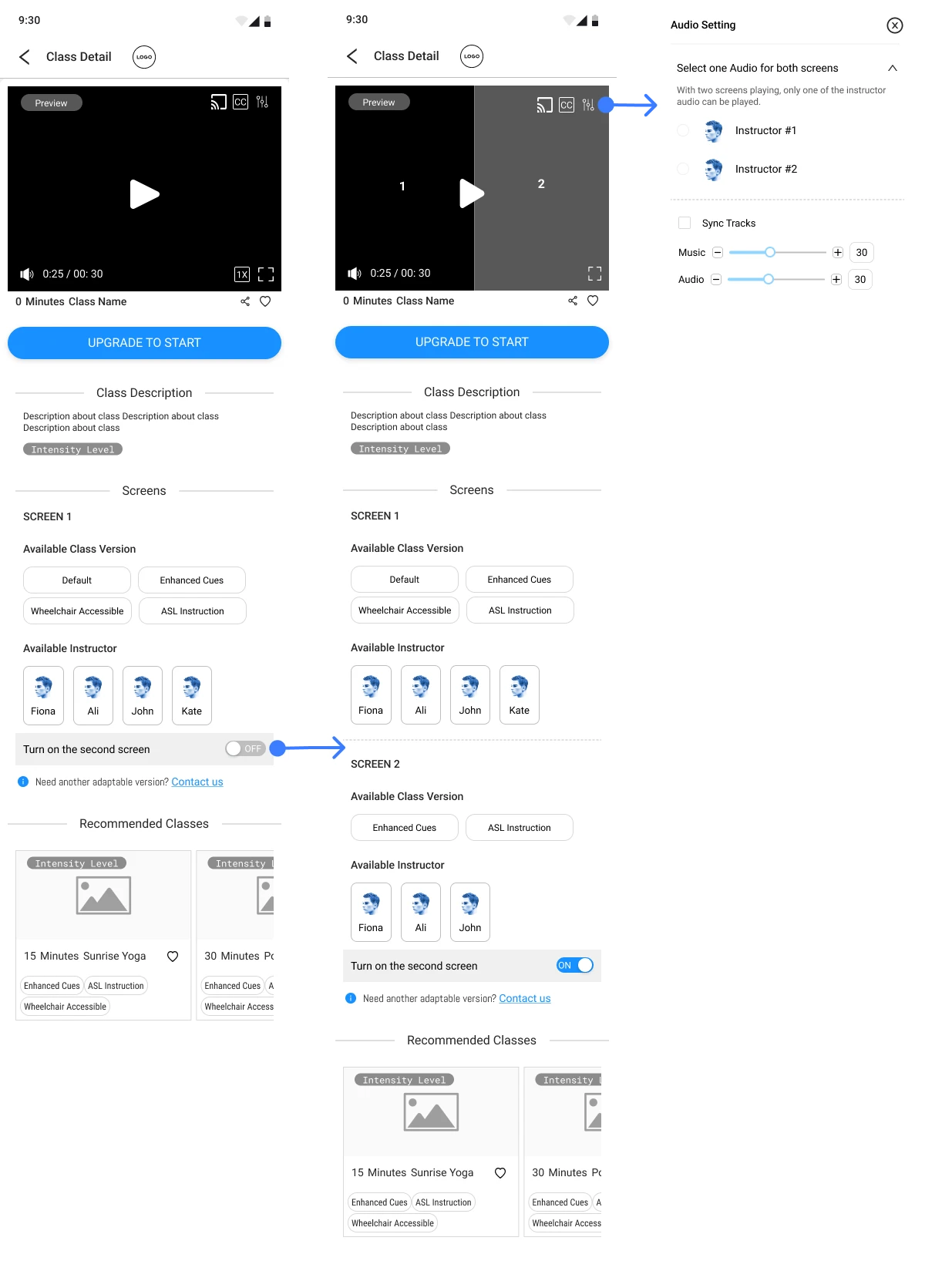
After
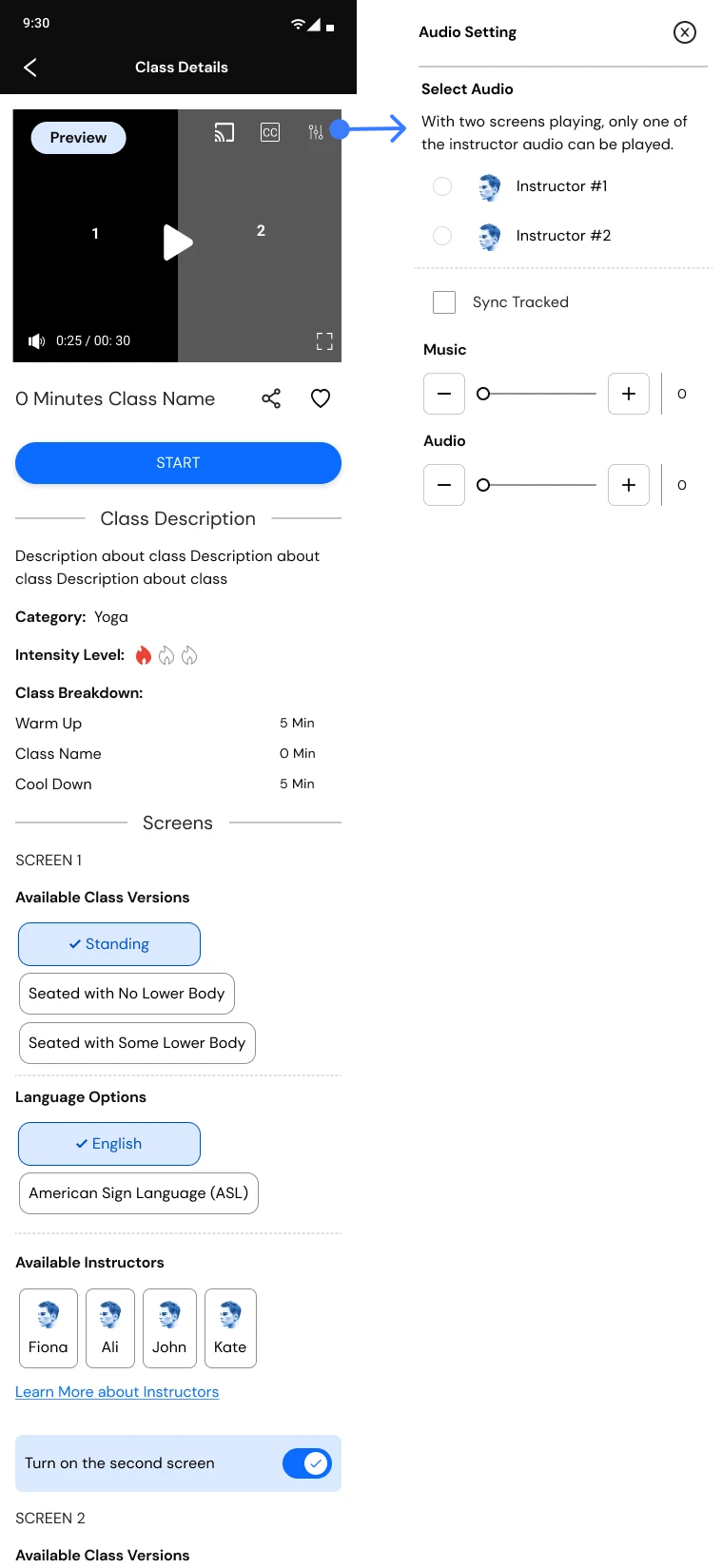
The image shows the initial iteration and MVP version showing class details on split screens, showcasing two versions.
3.4.a. Change: Audio Setting
The design outlined below is for the audio settings that enables users to select their preferred audio track and customize the volume of both the instructor and the music. Previously, I had opted for sliders to control the audio. However, in the following iterations, in order to ensure ease of use for individuals with limited motor skills and low vision, I instead incorporated plus (+) and minus (-) tab buttons in the UI.
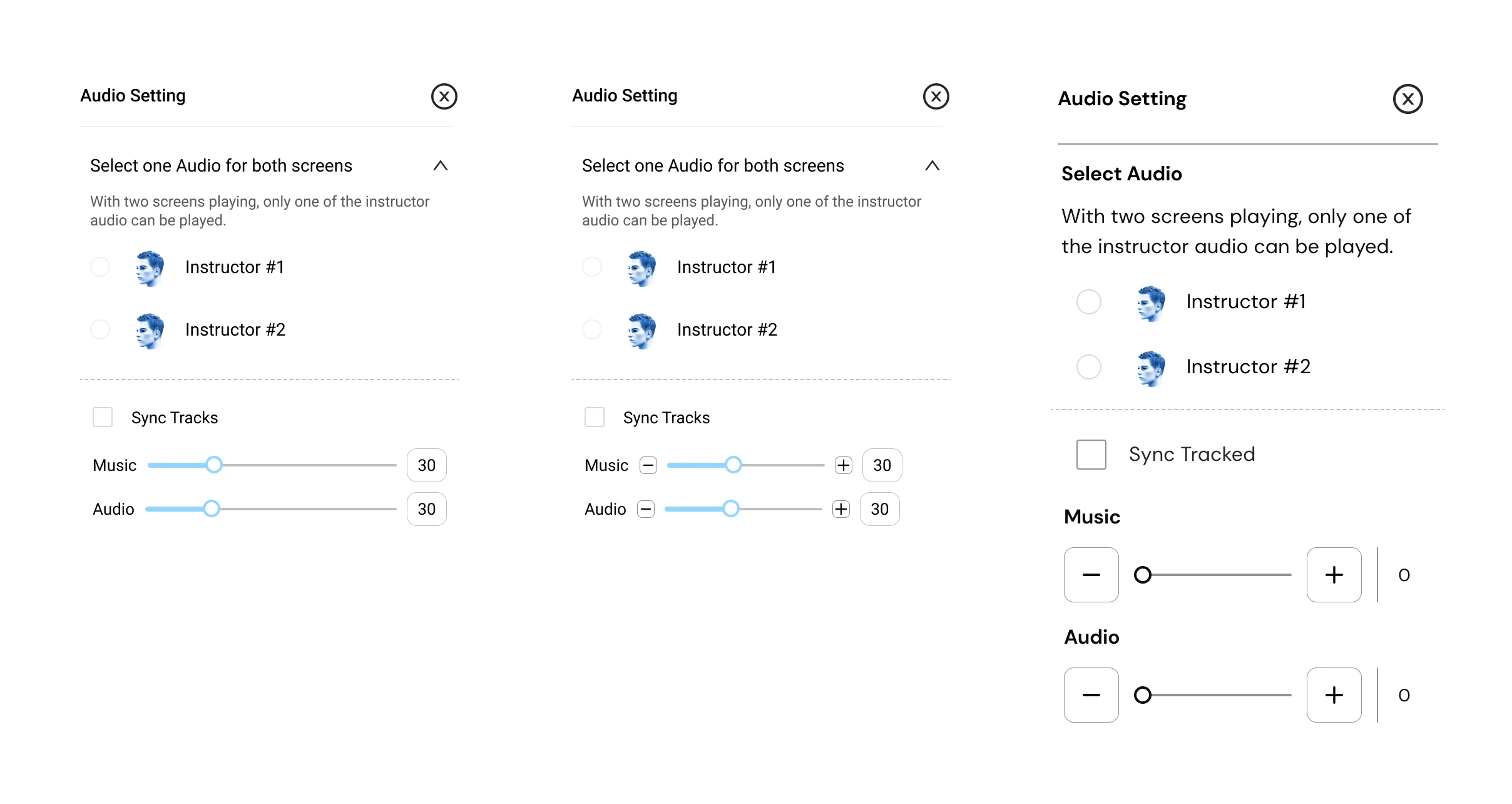
4. Web Tool for Admins
I have also led the design of web administration panels. This involved extensive discussions with the content team, developers, and technology leaders to achieve alignment. Further details on the work I have accomplished will be provided soon.
- Use Cases/Workflow
- User Testing
- Wireframes
The image represents a snapshot of the admin panel, which enables the administrator to manage class and instructor information, media files, users, and content tags.
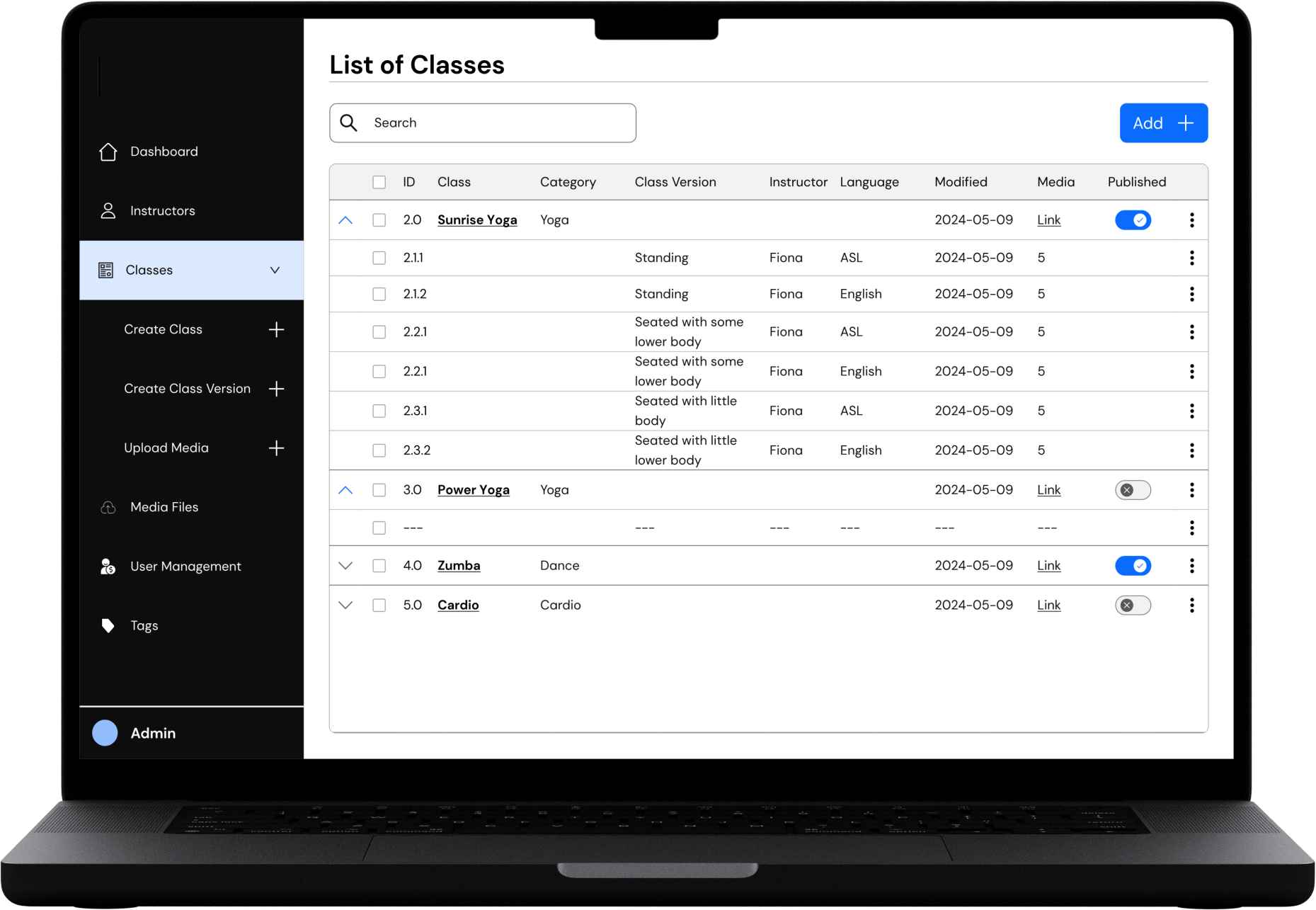
5. Learning Experience
Through the process of this project, I have gained valuable experience in designing properly with Agile development teams. I learned how to effectively include the developers in the design process from the beginning and robustly share the Figma designs with them along the way, and incorporating their input regarding the fast and light implementations of the design.
In one instance for example, I had designed a page that would have been computationally taxing to run. And based on their feedback, I went back and re-made some portions to make it lighter. This further demonstrated to me the importance of seeking feedback from the developers multiple sprints before the implementation time.
